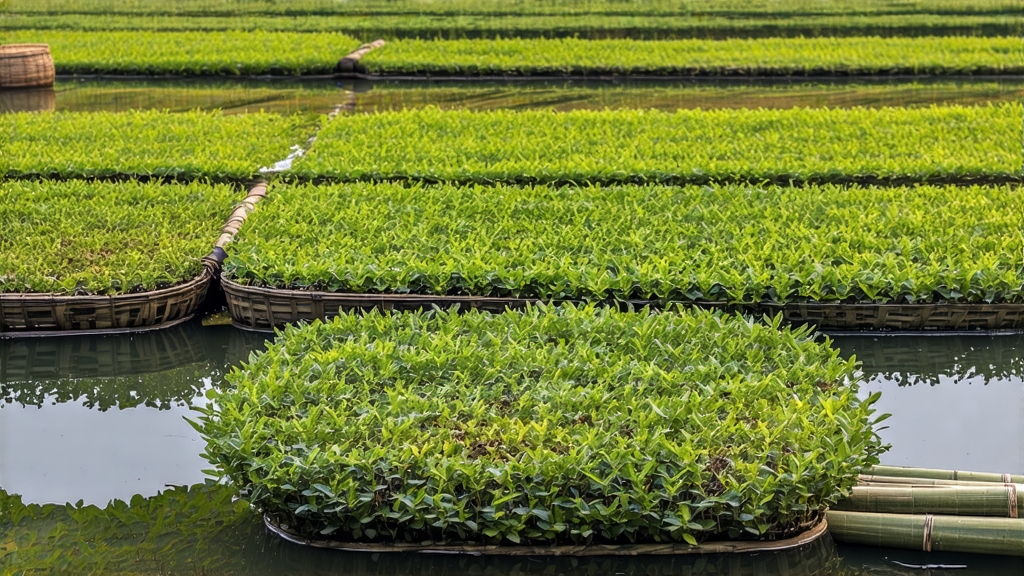
Longjing—often spelled Lung Ching in older texts—is the single green tea most Chinese would save if every other leaf vanished. It is not merely a beverage; it is a landscape pressed into a leaf, a millennium of courtship between soil, mist, and human hand. To understand China through one cup, begin here, on the western shore of Hangzhou’s West Lake, where the hills fold like green silk and the air smells of apricot blossom and mineral water.
History: From Temple to Throne
Legend places the first Longjing bushes beside Longjing (“Dragon-Well”) spring during the Eastern Jin dynasty (4th century), tended by monks who believed the watercourse was guarded by a sleeping dragon. By the Tang, the tea was tribute; by the Song, it was poetry. The Qianlong Emperor, touring the south in 1751, so admired the bushes at Shi-feng Shan that he plucked leaves himself and deeded the eighteen imperial trees still living today. When the last emperor abdicated in 1912, the gardens passed to village families, yet the mystique only deepened. In 1949 Longjing was served to Mao Zedong’s first state banquet; in 1972 Nixon drank it with Zhou Enlai. Thus the leaf has always been politics, art, and memory dissolved in water.
Micro-Regions: Five Mountains, Five Voices
Chinese law protects only leaves from the 168 km² core of Hangzhou’s West Lake Scenic Area. Within that micro-climate, five sub-zones express distinct terroir:
- Shi-feng (Lion Peak): highest elevation, quartz-rich soil, longest snow cover. The leaf is tiny, sword-shaped, with a bright nut-sweet finish that lingers like marzipan.
- Mei-jia-wu: a basin that traps morning fog; broader leaf, orchid aroma, softer texture.
- Weng-jia Shan: iron-rich red soil gives a faint metallic snap, beloved by sommeliers who seek structure.
- Hu-pao (“Tiger-Run”): spring water percolates through granite; the tea tastes of wet stone and raw pea.
- Longjing Village itself: the original well still bubbles; leaf here is balanced, classic, the reference standard.
Beyond the core lie “Qiantang” and “Yuezhou” Longjing, grown in neighbouring provinces. They are pleasant, affordable, but lack the crystalline clarity that altitude, fog, and folklore confer.
Cultivars: The Genetic Symphony
The original bush is a seed-propagated landrace called qunti (“group type”). Its leaves are small, uneven, and stubbornly low-yield, yet they possess the most complex aromatics. In the 1980s researchers released Longjing #43, a clonal cultivar that buds ten days earlier, yields threefold, and flushes uniformly—ideal for mechanised harvest. A newer cultivar, Zhong-te 108, sacrifices some fragrance for frost resistance. Purists insist on qunti for pre-Qingming lots; entrepreneurs prefer #43 for mass market. The debate replays the tension between heritage and modernity in every Chinese kitchen garden.
Harvest Calendar: Racing the Qingming Bell
Quality is measured in solar terms. Pre-Qingming (before 4–5 April) leaf receives the highest accolade: one bud, sometimes with an unopened leaf the size of a sparrow’s tongue. A skilled picker harvests barely 600 g per day. Ming-qian (“before the brightness”) tea offers snow-water clarity, chestnut sweetness, and a price rivalling silver. Gu-yu (around 20 April) leaf is larger, still tender, delivering more vegetal punch at half the cost. After li-xia (early May) the same bush yields commodity tea for office thermos bottles. Thus the calendar, not the label, is the honest vintage report.
Craft: The 250 °C Hand Ballet
Within minutes of plucking, the leaf is carried in bamboo trays to the village alley where woks wait, heated by wood from loquat trees—its smoke neutral and sweet. A master fryer works two woks simultaneously: the first at 250 °C to kill green enzymes in exactly 120 seconds; the second cooler, 80 °C, to coax shape and residual moisture. Hands alone judge temperature; if the leaf burns, a year’s prestige is lost. The motion is shi-re (“ten-heat”): press, tumble, stroke, flick—ten